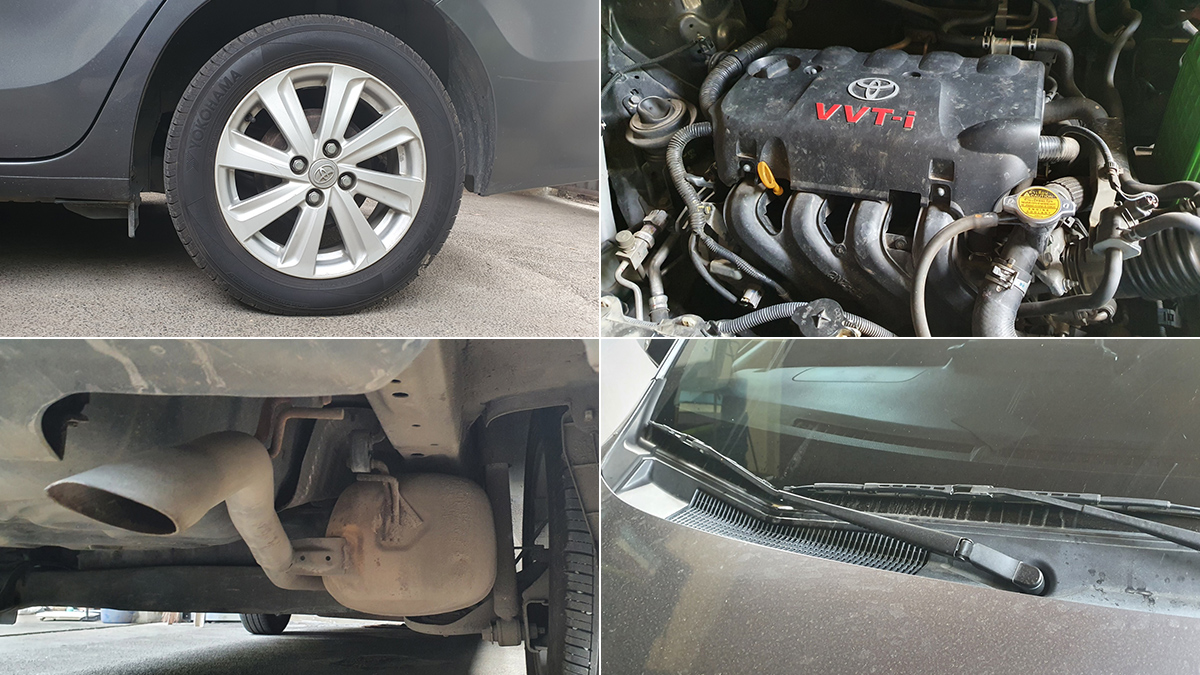If the Land Transportation Office’s (LTO) new motor vehicle inspection system (MVIS) is everything it’s being cracked up to be, motorists can expect a more stringent testing process at private motor vehicle inspection centers (PMVICs). Chances are some of you—especially those who’ve grown accustomed to simply buying their way to meeting LTO standards—will be surprised at how much more scrutiny your vehicles will undergo. Over 60 components will be inspected, both visually and with the use of automated diagnostic equipment.
Good news: We’ve managed to get a copy of the LTO’s MVIS standards and implementing rules and regulations (IRR). After sifting through the document, we’ve come up with a list of seven things you should pay particular attention to before scheduling a PMVIC appointment. Get any issues fixed first so that your ride passes the test on the first attempt.
1) Make sure the engine, the transmission, the radiator, and the differentials do not have leaks.
One of the main things MVIS testing will look for is leaks. Actually, scratch that—even anything that may lead to a leak will be counted as a red flag. This includes corrosion on pipes and damaged tubes. Some leak-related faults listed in the MVIS IRR include fuel fumes leaking into the passenger compartment, oil leaks affecting your differentials, and leaks affecting your power steering and brake fluid.
2) Aside from being in good condition, your tires should not be past their usable life.
See to it that your car’s tires are free of deformities and defects like cracks and cuts, and ensure that the tire-wear indicators aren’t exposed. PMVICs will also check if owners have tried to regroove their tires. Any tires that are over five years old (the LTO’s standard for tire life) will also be considered “expired.” Don’t know if ride car needs new tires? Check out our handy guide. Ensure your wheels’ nuts and bolts are properly fastened, too.
3) Replace broken ball joints, stabilizer links, and wheel bearings.
When it comes to these components, there are five words every motorist needs to keep in mind: “Tight and free of damage.” Nuts, bolts, bushings, linkages, and bearings will undergo scrutiny during MVIS testing, including those of the driveshaft, the steering system, and the suspension. Make sure all you aren’t missing any, either. Remember: Tight. And. Free. Of. Damage. Write it down.
4) Check for damage to muffler components.
Have a look at your car’s exhaust/muffler before scheduling a PMVIC appointment. Ensure it isn’t damaged, deformed, or leaking. Inspectors will also take into account the sound level of your exhaust, and anything that emits over 99 decibels between 2,000-2,500rpm will fail this test.
5) Check the condition of the shock absorbers.
PMVICs are equipped with automated suspension testers, among many other automated equipment designed to assess the roadworthiness of a vehicle. Suspension tests measure how planted your car remains onto road surfaces, as well as the effectiveness and state of the shock absorbers and the balance between left and right axles. If you already notice that something’s up with your suspension, have it checked as soon as possible.
6) Watch out for common driveshaft issues.
Some common driveshaft warning signs to take note of include clunking or knocking noises, squeaking, intense vibrations from underneath the vehicle. If you’re encountering any of these things, have your car checked. Apart from causing your car to fail the MVIS test, driveshaft problems are potentially dangerous and could lead to accidents.
7) Got tinted headlights? You’re gonna have to lose them.
We’ve created a separate tip sheet on how to ensure that your car’s headlights—and all the other exterior lights, for that matter—will pass MVIS scrutiny. Check it out here.
8) Mind the little things.
It would be a shame if your car ended up failing PMVIC testing due to issues that could have very easily been addressed. Some of the no-brainers that PMVIC inspectors will take into account include the presence of an early warning device (EWD) inside the vehicle, an absent fuel cap, a malfunctioning interior light, a license plate that’s difficult to read because of old number-plate lights, or malfunctioning windshield washers and wipers.
Got all these things checked and, if necessary, fixed or replaced? You’re ready for your MVIS inspection, then. If you want to know what to expect at the PMVIC, here’s our step-by-step guide on the process.












